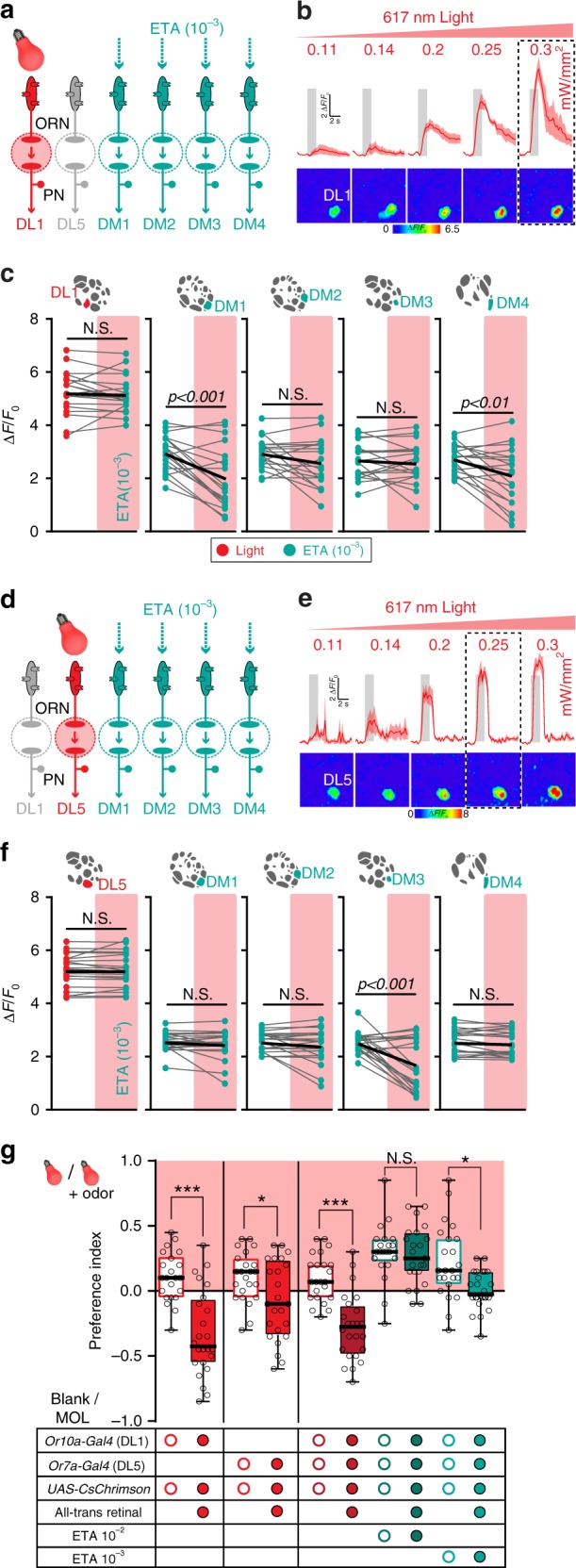Fig. 5.

Optogenetic activation of repellent-responsive glomeruli unveils glomerular crosstalk. a Schematic of the experimental design: artificial activation of CsChrimson by red light in Or10a-expressing ORNs (targeting DL1) during stimulation with ethyl acetate. Color code reflects activation by light (red) or attractive odor (bright blue-green). b Calcium signals (time traces and pseudocolored images) of glomerulus DL1 to photoactivation with increasing intensities of 619 nm light for 2 s. Gray boxes indicate light stimulation. Lines represent averaged response, shadows give SEM (n = 3). Dashed box marks the light intensity used for further experiments. c Mean PN activity of repellent- and attractant-responsive glomeruli during stimulation with either light (red dots), ethyl acetate (10−3, bright blue-green dots), or both combined (additional red rectangles) in flies expressing CsChrimson in ORNs of DL1 and GCaMP3 in PNs (n = 19, paired t-test). d Schematic of the experimental design: artificial activation of CsChrimson by red light in Or7a-expressing ORNs (targeting DL5) during stimulation with ethyl acetate. e Same experiment as in b but for CsChrimson expression in ORNs of DL5 (n = 4). f Same experiment as in c but for CsChrimson expression in ORNs of DL5 (n = 21, paired t-test). g Box plots showing preference indices in the T-maze assay of flies with artificial activation of ORNs expressing Or10a (DL1), Or7a (DL5) or both via CsChrimson by red light alone (bulb) or red light combined with an odor (bulb + odor) against the dark arm of the T-maze without (Blank) or with solvent (MOL) (n = 22–24, one-way ANOVA with posthoc Sidak’s multiple comparisons test, *p < 0.05, ***p < 0.001). Treatment and genotypes are indicated by the table below. In our assay, control flies (no all-trans retinal) showed reproducible slight attraction to light. Based on this, we used the control flies as the comparison point for calculating optogenetically driven avoidance
